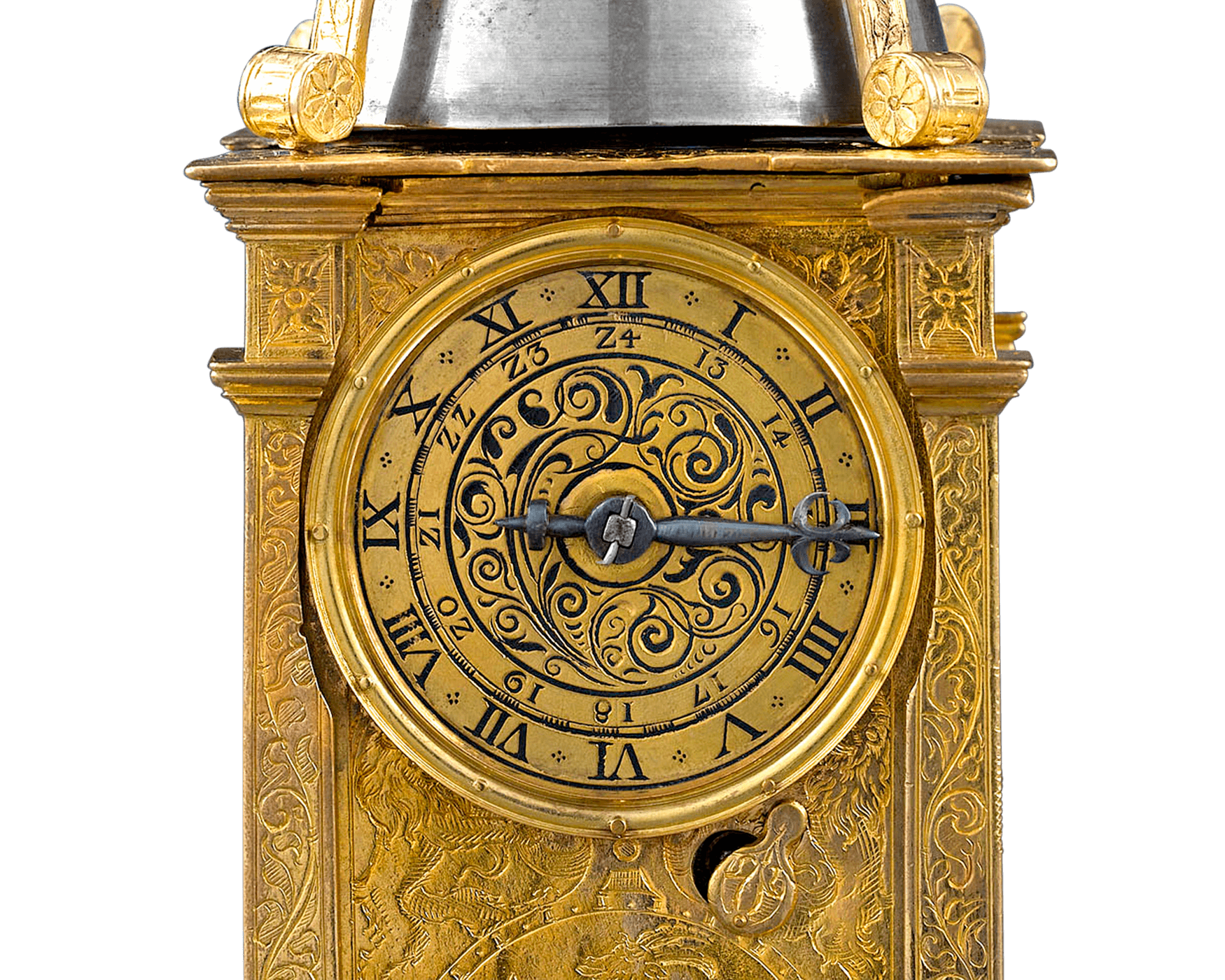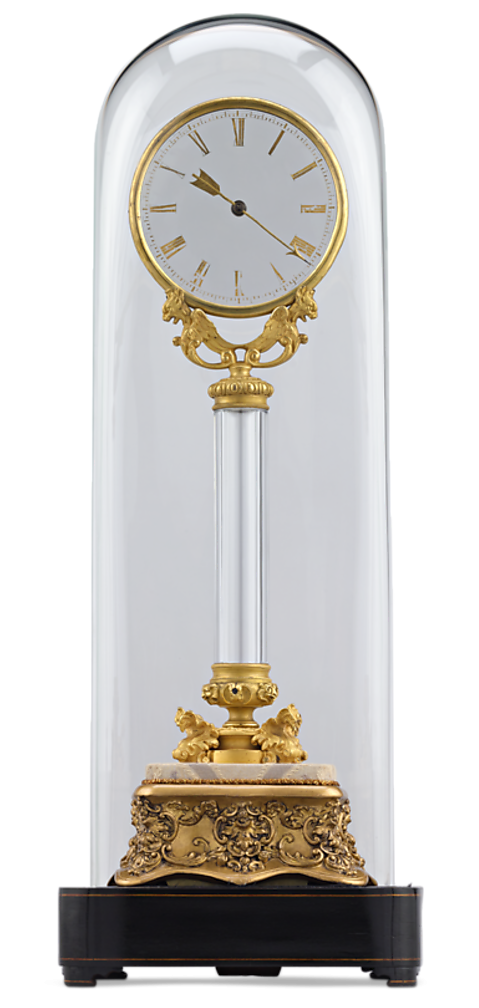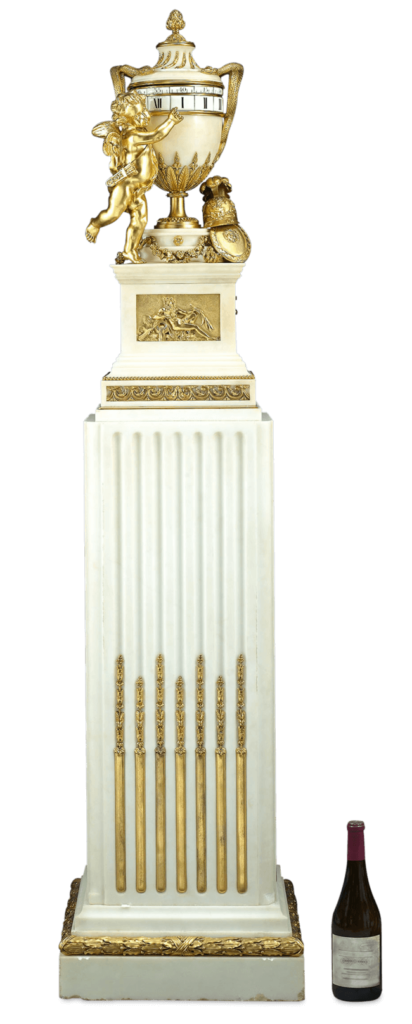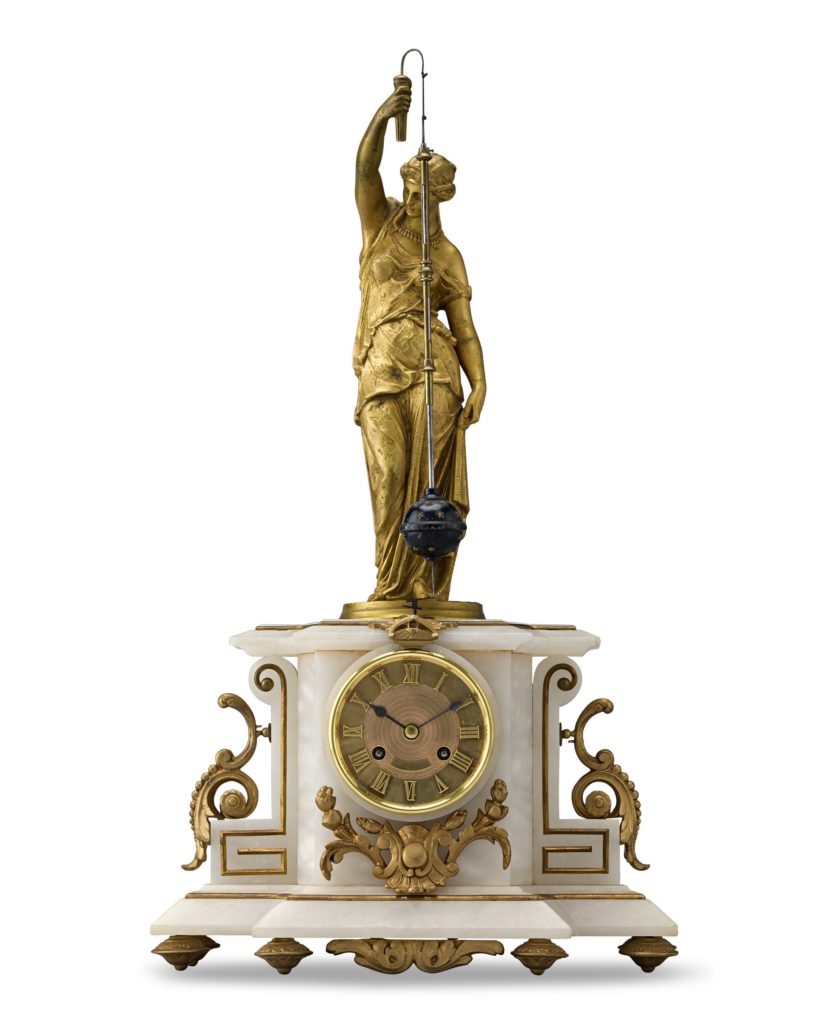For thousands of years man has endeavored to harness and tame the relentless march of time. Predictable at its essence, time seems to race by in the blink of eye for one occasion and drag along as if frozen for another. Perhaps that is the mystery of a fine clock…while it is utterly precise in its measurement, it can be stingy or generous with its time.

The evolution of timekeeping instruments dates back thousands of years from the earliest sundials, advancing steadily to the great regulator clocks that dominated town squares, to the complex and beautiful clocks of the 18th and 19th centuries. Clock collectors have a seemingly endless array of types and styles of clocks from which to choose. Here, we’ve chosen five essential clocks that represent some of history’s most innovative, intriguing and important horological advances. Each of these extraordinary timekeepers would shine in any collection.
1. The Renaissance Clock
16th-Century Renaissance Turret Clock, Circa 1570

Considered one of the greatest and most important inventions of the Renaissance period, the clock embodied the renewed interest in science and the arts. The first mechanical devices that indicated time began appearing in the 13th century and were large, weight-driven devices placed in the turrets of public buildings. These early timekeepers struck on the hour like the clocks that would follow them, but they lacked hands and faces.
The spring driven clock appeared in the 1400s answering the demand for smaller, more portable devices that could be used in the home. Clockmakers and artisans could now showcase their skills and artistic talents in these scientific, and increasingly luxurious marvels.
This particular German Renaissance Period Turret Clock, circa 1570, is an exceptional and rare example of these earliest table clocks. Encased in exuberantly engraved fire gilt brass, the mechanism strikes on the hour, and tells the time with an hour hand and an applied face marked in 24-hour increments. The movement is a gut/fuseé with going train, all crafted of iron, with two hammers and a verge escapement.
Renaissance clocks such as this were considered the ultimate luxury item and today are among the rarest of time pieces, with most examples appearing only in museums. The inclusion of such an important and rare timepiece would certainly be a highlight in any collection.
2. The Longcase Clock with Moon Phase
Important Henry Moze Longcase Clock, Circa 1740

No clock collection would be complete without the inclusion of a fine longcase, or grandfather, clock. And, if that clock also features the addition of a highly desirable moon phase, all the better. This extraordinary and important walnut tall case clock by renowned clockmaker Henry Moze of London features an eight-day movement set to strike on the hour and features a mechanism to display the moon phases and date.
Moon phase clocks were of particular importance to people in the 17th and 18th centuries so that they might time their night journeys or outings to take advantage of the full moon’s light, perhaps avoiding the many perils that awaited travelers on dark and lonely roads, from thieves and marauders to swollen streams and downed bridges.
By the 1730s, street lamps had become common throughout London and larger cities and towns making it less critical to coordinate one's journey with the appearance of the full moon. As artificial lighting became more commonplace, so the moon dial became less so, making fine clocks with beautiful moon dials particularly appealing to collectors.
A clock of this caliber, by an important London clockmaker, possessing the wonderful moon phase can be a stunning focal point in any decor or the perfect addition to a well-rounded clock collection.
3. The Mystery Clock
The Houdin Mystery Clock, Circa 1840

As timepieces evolved over the centuries, clockmakers became more and more creative and innovative in their designs conceiving a diverse array of fascinating timekeeping mechanisms. Among those creations was a particularly fascinating category of pieces known as mystery clocks, so dubbed as it is often difficult to detect how the clock actually works. These clocks are immensely popular and are often the most intriguing items in any collection. Mystery clocks take many forms, including conical and pendulum clocks (see below), and transparent dial clocks, such as this example, whose hands seem to float magically around the glass dial.
This exceptionally rare "Triple Mystery" clock was crafted by Jean Eugène Robert-Houdin, inventor, scientist, mechanical and horological genius, and magician extraordinaire; he is widely considered to be the father of the mystery clock.
Ingeniously designed, the single-handed transparent glass dial revolves without any apparent connection to the movement, which is cleverly hidden inside the decorative bronze base. The secret lies in the fact that the column contains a second glass column, and both rotate in opposite directions to power the gears hidden around the face.
While any clock by this legendary figure is desirable, this particular example represents the clockmaker’s finest work, hailing from his third series of mystery clocks, which is considered among his greatest. Such a rare and wonderful clock as this would certainly bring a bit of magic to the refined clock collection or be a worthy cornerstone from which to build.
4. The Annular Dial Clock
French Annular Dial Clock by Leroy, Circa 1880

The first annular dial clocks appeared in France in the late 1700s at the height of the Rococo period and proved to be quite popular among wealthy patrons drawn to the novel mechanisms and opulent designs. In fact, Marie Antoinette chose them as her clocks of preference, inspiring clockmakers to conjure ever-more opulent and complex creations to fulfill the desires of the ruling class. These glorious clocks enjoyed a resurgence in popularity during the Napoleon III period and remain a favorite among clock collectors who appreciate their incredible beauty and unique mechanism.
Unlike traditional timekeepers that indicated the time with clock hands set upon the plane of a clock face, annular dials employed rotating chapter rings for minutes and hours, often with a cupid, snake or other decorative element pointing to the time. Their unusual shape made them perfect for imparting a sculptural aesthetic to the science of timekeeping. Today, there are a number of extraordinary examples of the horologist's art from which to choose, with none finer than this example.
This superb annular dial clock, crafted by L. Leroy & Cie of bronze and Carrera marble, exemplifies the clock making expertise of 19th-century French clockmakers and is one of the very finest we have seen. L. Leroy & Cie., who were well-established horologists in Paris during the second half of the 19th century, created some of the finest quality clocks of the day, many with highly complicated movements. Such a clock would make a focal addition to any collection.
5. Conical Clocks
The Farcot Conical Clock, Circa 1880
Among the more popular collectible clocks is the conical mystery clock. Unlike more traditional cocks whose pendulums swing from side to side, the conical clock's "pendulum" moves in a continuous circular motion. This constant three-dimensional motion was designed to overcome the inertia of a swinging pendulum, which stopped for a fraction of a second to swing in the opposite direction. Thus, the continuously rotating ball, most often held by a maiden or other figure and driven by a suspension mechanism hidden inside of the base of the figure, provided the highest of level of timekeeping accuracy.
This extremely rare and beautiful French conical pendulum clock features a suspension mechanism patented by the famed clockmaker Eugène Farcot. Crafted during the second half of the 19th century, this clock is a superb example of both the technical mastery and artistic beauty that found expression at the hands of creators like Farcot. Today, this combination of engineering accuracy and aesthetic appeal continues to attract collectors, and clocks such as this, in fine working condition, by an important maker, and of exceptional beauty, are particularly desirable.
Adding to Your Collection
Each of these amazing clocks represents a chapter in timekeeping history and each would make an important and significant contribution to any clock collection. Please contact us if you are interested in learning more about our extensive and comprehensive clock offerings.
BROWSE OUR SELECTION OF ANTIQUE CLOCKS FOR SALE.
Learn more about our unprecedented 125% Guarantee.



